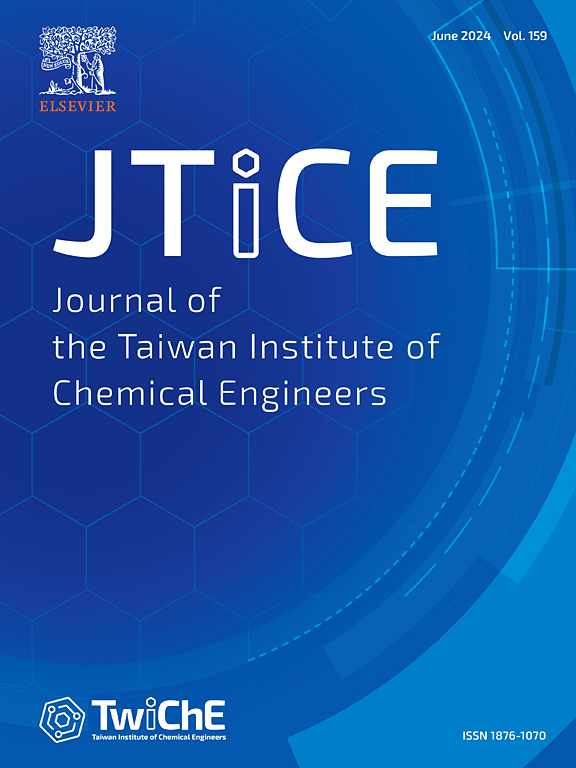Developing a ternary metal oxide Zn2GeO4 with graphitic carbon nitride supported nanocomposite for electrochemical assessment of nanomolar-scale nimesulide
IF 5.5
3区 工程技术
Q1 ENGINEERING, CHEMICAL
Journal of the Taiwan Institute of Chemical Engineers
Pub Date : 2025-01-22
DOI:10.1016/j.jtice.2025.105986
引用次数: 0
Abstract
Background
Various groups of organic chemicals are commonly utilized in medicines for both veterinary and human medicine. Non-steroidal anti-inflammatory drugs (NSAIDs), particularly nimesulide (NMS), are known for their anti-inflammatory, antipyretic, and antirheumatic effects. Great concerns about NMS toxicity have prompted the creation of effective ternary metal oxide-based nanocomposite sensors.
Methods
Using a simple solution technique, we synthesized Zn2GeO4 nanoparticles, an n-type semiconductor. Zn2GeO4 nanoparticles were deposited on graphitic carbon nitride (GCN) nanosheets to improve electrocatalytic activity, conductivity, and stability. The synthesized Zn2GeO4/GCN nanocomposite was characterized by XRD, FT-IR, XPS, and FE-SEM before being formed on a screen-printed carbon electrode (SPCE) for NMS detection.
Significant Findings
Electrochemical tests using cyclic voltammetry (CV) and differential pulse voltammetry (DPV) demonstrated a broad linear range (0.049–94.90 μM), a nanomolar detection limit (2.7 nM), and good sensitivity (5.3 µA µM-1 cm-2). In addition, the nanocomposite demonstrated higher selectivity in interference tests, as well as excellent repeatability, stability, and recovery in real-time analysis with human blood.

求助全文
约1分钟内获得全文
求助全文
来源期刊
CiteScore
9.10
自引率
14.00%
发文量
362
审稿时长
35 days
期刊介绍:
Journal of the Taiwan Institute of Chemical Engineers (formerly known as Journal of the Chinese Institute of Chemical Engineers) publishes original works, from fundamental principles to practical applications, in the broad field of chemical engineering with special focus on three aspects: Chemical and Biomolecular Science and Technology, Energy and Environmental Science and Technology, and Materials Science and Technology. Authors should choose for their manuscript an appropriate aspect section and a few related classifications when submitting to the journal online.

 求助内容:
求助内容: 应助结果提醒方式:
应助结果提醒方式:


